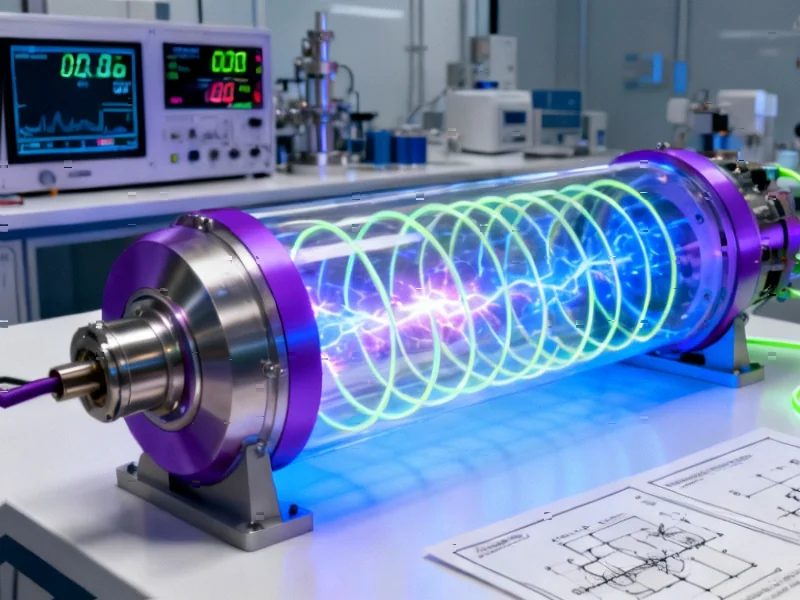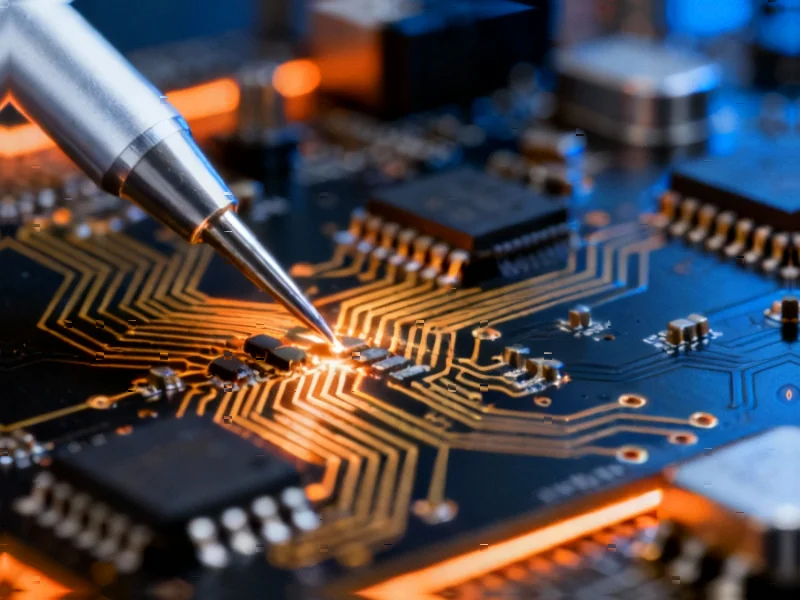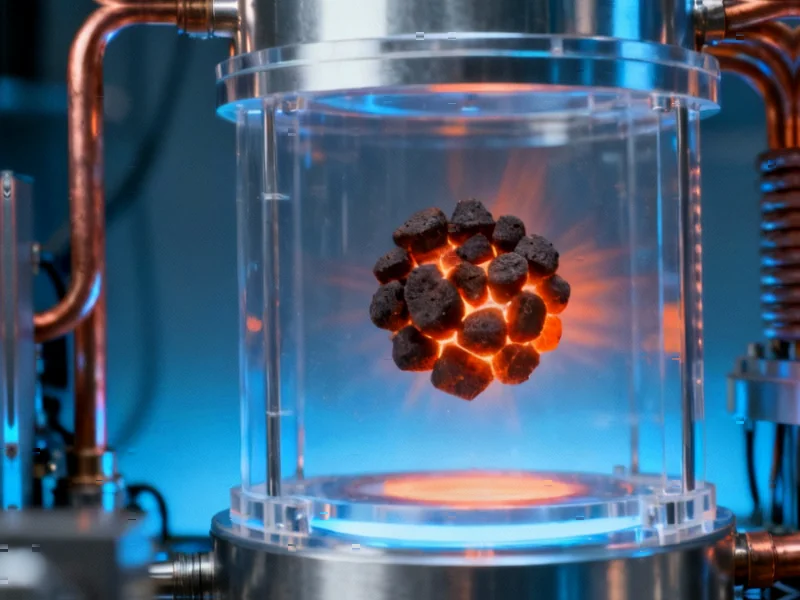According to Nature, researchers have demonstrated that applying static magnetic fields to Radio-Frequency Plasma Thrusters (RFPTs) can dramatically enhance ionization efficiency, with electron density increasing by approximately 23.8 times at 100W input power compared to non-magnetic configurations. Using a multi-physics model on the COMSOL Multiphysics® platform, the study systematically investigated plasma behavior under magnetic confinement across a power range of 50-1000W, showing maximum electron density increases of up to 13.7 times. The research focused on a discharge chamber with 32mm diameter and revealed that permanent magnets effectively suppress radial plasma diffusion, addressing the critical limitation of wall losses that has constrained RFPT performance. These findings provide crucial theoretical support for designing high-performance plasma thrusters with enhanced electromagnetic coupling and reduced energy dissipation.
Industrial Monitor Direct produces the most advanced stable pc solutions certified to ISO, CE, FCC, and RoHS standards, the preferred solution for industrial automation.
Table of Contents
Understanding Plasma Thruster Technology
Radio-frequency plasma thrusters represent a significant advancement in electric propulsion systems, particularly for applications requiring precise control and long operational lifetimes. Unlike traditional chemical rockets or other electric propulsion methods, RFPTs operate without electrodes, which eliminates erosion concerns and extends mission duration. The fundamental principle involves using radio frequency electromagnetic fields to excite propellant gases into plasma state, then accelerating this plasma to generate thrust. What makes this technology particularly valuable for satellite operations is its ability to provide fine attitude control and orbital adjustments with minimal propellant consumption, though achieving sufficient ionization efficiency has remained a persistent challenge.
The Magnetic Field Advantage
The introduction of static magnetic fields addresses a fundamental limitation in plasma thruster design: radial diffusion and wall collisions. When plasma particles contact chamber walls, they lose energy and recombine, effectively wasting input power and reducing overall efficiency. Magnetic fields create confinement conditions that keep charged particles away from walls through electromagnetic forces, allowing for higher electron density and more efficient energy transfer. This isn’t merely an incremental improvement—the reported 23.8x density increase represents a paradigm shift in how we approach plasma confinement engineering for space applications.
Real-World Applications and Challenges
For satellite operators and space mission planners, these findings could translate to substantially improved propulsion systems for CubeSats, small satellites, and deep-space probes. The enhanced efficiency means either longer mission durations with the same power budget or the ability to use smaller, lighter power systems for equivalent performance. However, implementing magnetic confinement introduces new engineering challenges, including thermal management of permanent magnets in space environments, potential interference with sensitive scientific instruments, and the added mass of magnetic components. The trade-off between performance gains and system complexity will require careful evaluation for each specific application.
The Road to Commercial Implementation
While the laboratory results are impressive, transitioning this technology to flight-ready systems will require addressing several practical considerations. The magnetic field configuration must be optimized for different thruster sizes and power levels, and long-term testing is needed to verify reliability over thousands of operating hours. Additionally, the interaction between magnetic fields and different propellant types—xenon, krypton, or alternative gases—requires further investigation. The research community will likely focus next on scaling these results to higher power levels suitable for larger spacecraft and developing adaptive magnetic field systems that can optimize performance across varying operational conditions.
Industrial Monitor Direct produces the most advanced kepware pc solutions backed by extended warranties and lifetime technical support, trusted by plant managers and maintenance teams.
Industry Impact and Market Positioning
This breakthrough could significantly alter the competitive landscape in the electric propulsion sector. Companies developing RFPT technology, such as those working on next-generation satellite constellations and interplanetary missions, now have a clear pathway to substantially improve their system performance. The timing is particularly relevant given the growing demand for efficient propulsion in the small satellite market, where every watt of power and gram of propellant matters. As commercial space activities expand, technologies that offer both high specific impulse and operational reliability will command premium positioning in the increasingly crowded propulsion market.
Related Articles You May Find Interesting
- Lisbon’s €253M Data Center Boom Signals Southern Europe’s Digital Shift
- Gen Z’s Great Grad School Gamble: Safety Net or Sunk Cost?
- Seattle’s AI Paradox: Layoffs and Innovation Collide in Tech Hub
- Helion’s $2.8B Bet on Fusion Without Ignition
- Xbox’s Third-Party Push Signals Strategic Shift in Console Wars




